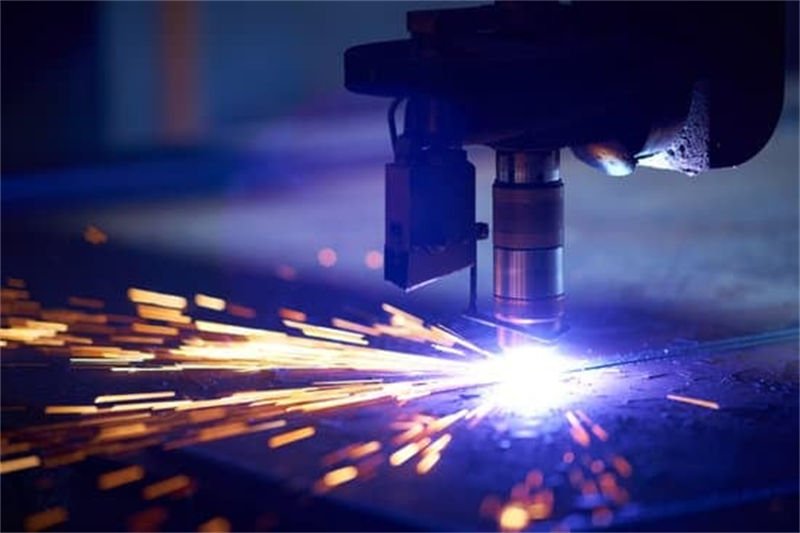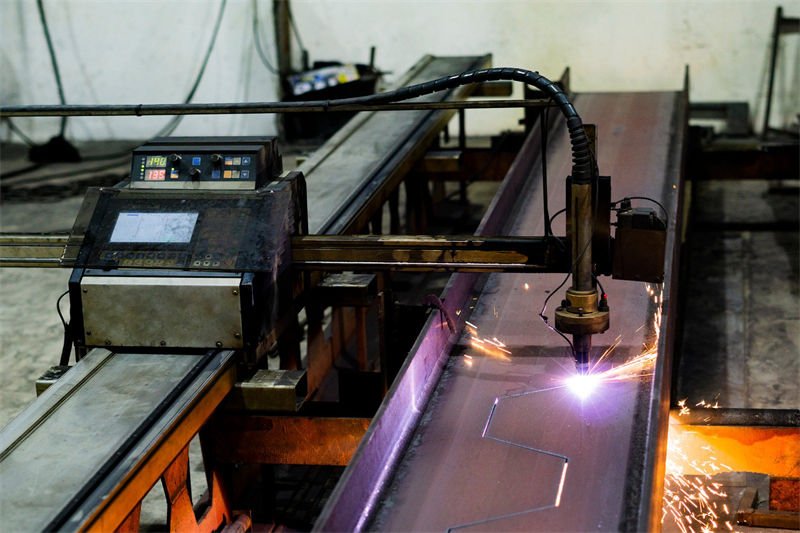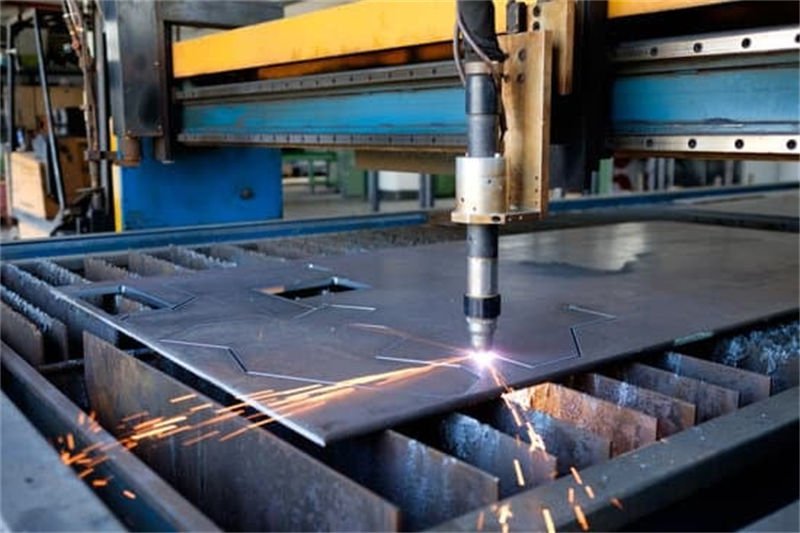
Have you ever thought about using a plasma cutter on brass? Let’s look into this interesting option together.
Yes, using a plasma cutter on brass proves challenging. Metal thickness and equipment settings become crucial for a clean cut. Brass conducts electricity, so plasma cutting works with precise adjustments. It’s really suitable for this if done correctly.
I remember the first time I thought about using a plasma cutter on brass – it felt like starting a new adventure. The idea was exciting but also scary. Plasma cutters work well with conductive metals. Brass has special features and it seemed perfect for this tool. Thickness and precision are very important.
In my experience, achieving a perfect cut needed several tries. I adjusted settings often. It’s like adjusting an old radio to hear your favorite music clearly. Here are some practical tips I gathered over time to help you through this process smoothly and effectively.
Plasma cutters cannot cut brass effectively.False
Plasma cutters can cut brass, but require precise settings for quality.
Brass requires specific plasma cutter settings.True
Adjustments in settings are needed to ensure clean cuts on brass.
What Are the Benefits of Using a Plasma Cutter on Brass?
Have you ever thought about whether a plasma cutter is suitable for your brass projects? It’s probably a transformative tool.
A plasma cutter slices through brass with accuracy, speed and clean cuts. It works really well for detailed designs. Reduced waste is a result. Smooth edges appear without much extra work.

Precision and Accuracy
My first experience with a plasma cutter on brass felt like finding a secret power. The accuracy1 was amazing, especially with the detailed designs brass is known for. For both decorative items and industrial uses, the plasma cutter surprises with its ability to keep tiny details clear. Imagine a paintbrush capable of painting the finest details.
Speed and Efficiency
Long hours of hand cutting were my past frustration. Plasma cutting changed everything. The speed2 is impressive; what once took half a day now only takes a few minutes. It’s not just about saving time but freeing the mind for creativity. Plasma cutting increases productivity without lowering quality, which is very helpful.
Cleaner Cuts and Reduced Wastage
If wasting costly materials like brass annoys you, you’ll appreciate this. Plasma cutters give clean cuts with minimal waste, leaving smooth edges needing almost no finishing. Less material wasted means more pieces count. It’s also a sustainable way to handle projects, which is important for manufacturers3.
Versatility in Design
Plasma cutters offer surprising versatility. Whether working with thin sheets or thick pieces, the cutter adjusts without frequent tool changes. Creative opportunities expand—from complex sculptures to simple engravings—making it feel like a magic wand for any brass project I imagine.
| Benefit | Description |
|---|---|
| Precision | Maintains intricate designs without distortion |
| Speed | Completes tasks faster than manual methods |
| Clean Cuts | Produces smooth edges with minimal kerf |
| Versatility | Handles different thicknesses without tool changes |
Considerations When Using Plasma Cutters
Every tool has points to consider. The type of gas and power settings crucially influence cutting brass. Spending time on research4 for each project pays off. Most importantly, prioritize safety to avoid accidents during operation. Getting the best results means balancing accuracy with caution because safety matters a lot.
Plasma cutters can cut brass with zero distortion.False
Plasma cutters minimize distortion but cannot eliminate it entirely.
Plasma cutting reduces brass wastage significantly.True
Minimal kerf from plasma cutting leads to reduced material loss.
What Challenges Might You Encounter When Plasma Cutting Brass?
Have you ever tried plasma cutting brass? It’s similar to baking a cake in a broken oven. Understanding its peculiarities is necessary to achieve that flawless slice. Let me guide you through it.
Plasma cutting brass proves challenging. Brass has high thermal conductivity. Heat moves quickly through it. Controlling heat becomes essential. Surface oxidation occurs easily. Precise work requires skill. Attention really matters. Quality relies on these factors. Efficiency depends on good technique.

High Thermal Conductivity of Brass
My first time working with brass surprised me. I didn’t know how fast it took in heat, causing messy, uneven cuts. Brass cools down faster than I drink my morning coffee. Adjusting plasma cutter settings5 is key for keeping the right heat on the cutting line.
| Material | Thermal Conductivity (W/m·K) |
|---|---|
| Brass | 109 |
| Steel | 50 |
| Aluminum | 235 |
Potential for Surface Oxidation
When I first saw oxidation on my brass piece, I was confused. High heat from plasma cutting causes oxidation. It’s like finding rust on a favorite bike. Using a shielding gas like nitrogen creates a wall against air oxygen, preserving the shiny surface.
Precise Control of Heat Input
Brass dislikes too much heat, kind of like a friend who hates spicy food. Learning to control heat precisely took time to avoid bends or rough edges. Employing advanced plasma cutters6 with adjustable settings truly helps manage heat.
Dealing with Residue and Dross Formation
Dross is that annoying leftover stuck on cut edges. With brass, it often happens because of how it handles heat. It’s like cookies sticking to an ungreased pan. Changing cutting speed and power settings reduces this sticky issue.
Importance of Proper Ventilation and Safety Measures
Cutting brass isn’t just about making cuts; keeping safe matters a lot too. Brass has zinc, which releases dangerous fumes – imagine a barbecue gone wrong. Good ventilation and personal protective equipment (PPE) are basic for safety.
Challenges in Achieving High Precision Cuts
Getting precise cuts on brass is like trying to sew with mittens on. CNC technology brings better precision by allowing steady control over cuts.
Knowing about these challenges and facing them directly helped me improve my brass cutting results. And looking into thorough guides7 really changed how I handle these techniques.
Brass has higher thermal conductivity than aluminum.False
Aluminum's thermal conductivity is 235 W/m·K, higher than brass's 109.
Using nitrogen can reduce oxidation in plasma cutting brass.True
Nitrogen acts as a shielding gas, preventing oxidation by blocking oxygen.
How can I master plasma cutting brass?
Have you ever found it difficult to get a flawless cut on brass with a plasma cutter?
Achieving the best results in plasma cutting brass requires attention to important elements. Low amperage is necessary. A narrow nozzle is important. Keeping a steady speed is crucial, too. Quality consumables play a vital role. Proper ventilation is very important for good outcomes. Good ventilation means success.

Understanding Brass Characteristics
Brass work feels like cooking a delicate dessert – both need care and patience. This copper-zinc mix brings its own challenges with heat and shine. The heat moves quickly, and the plasma arc shines in unexpected ways. That’s why a plasma cutter with adjustable settings changes everything.
Key Equipment Settings
Adjusting settings is like setting the right volume on a playlist. Get it right, and things flow well. These changes help reduce heat distortion, making cuts smooth like a favorite song.
| Setting | Recommended Adjustment |
|---|---|
| Amperage | Lower amperage to prevent excessive heat damage. |
| Speed | Consistent speed to avoid uneven edges or dross. |
| Nozzle Type | Use a narrow nozzle for precision cuts. |
For more help, look at our equipment guide8.
Consumable Quality
Consumables are like the tires on a car; good ones are necessary. Quality consumables offer more accuracy and longer life. Trusted brands deliver consistent results, just like choosing the best coffee for morning energy. Inspect regularly to keep everything running well.
Explore trusted consumable options9 for top results.
Ventilation and Safety Precautions
Cutting brass is not only about skill; safety comes first. Harmful fumes can escape, so proper ventilation is very important. Masks and goggles are essential, like wearing a seatbelt.
Discover more on workshop safety10 when working with brass.
Troubleshooting Common Issues
- Dross Formation: Often due to incorrect speed or power settings—think of it as annoying bumps on the road.
- Heat Affected Zone (HAZ): Reduce by tuning your settings, much like perfecting a recipe.
- Nozzle Clogging: Clean regularly, like keeping a tidy kitchen.
Knowing these problems is very important for better efficiency. Learn more about solving these issues here11.
Lower amperage prevents heat damage in brass cutting.True
Brass's high thermal conductivity requires lower amperage to avoid overheating.
Wide nozzles are ideal for precision cuts on brass.False
Narrow nozzles provide more precision, reducing dross and edge irregularities.
What Are Some Efficient Ways to Cut Brass?
Have you ever tried cutting brass and ended up upset with rough edges and old tools? You’re not the only one. Let’s look at some other ways to do this job much easier.
To cut brass efficiently, use specialized tools such as band saws or laser cutters. These tools offer precision and speed. They reduce material waste and tool wear. Precision is very important. Speed matters, too.

Grasping Brass Cutting Struggles
First time with a hacksaw and brass became a nightmare! Brass refused to cooperate, grabbing the blade tightly. Brass looks lovely and stays strong, yet cutting it smoothly gets tricky. It wears down tools fast and needs careful handling to prevent rough edges. For large amounts or very precise work, hacksaws often fall short. They really do.
Discovering Other Cutting Methods
Band Saws
Switching to a band saw felt like entering a new world. The blade moves continuously, making cuts as smooth as butter. Balance speed and accuracy well. Blades with more teeth help achieve those finer cuts you want.
| Method | Benefits | Considerations |
|---|---|---|
| Band Saw | Smooth cuts, versatile | Requires blade maintenance |
Laser Cutting
Laser cutting amazes like a magic trick. A focused beam cuts brass with amazing accuracy. Perfect for detailed designs. Usually, no finishing work is needed afterward. It might cost more initially, yet it saves in the long run due to reduced manual work.
| Method | Benefits | Considerations |
|---|---|---|
| Laser Cutter | Precision, intricate designs | Initial investment, requires setup |
Evaluating Hand Tools
For smaller tasks or for hobbyists like me, hand tools like rotary tools become quite useful. They take more time than machines but offer unmatched control for detailed work.
Gaining Community Knowledge
Community wisdom holds great power. Online platforms like Reddit and forums12 have consistently helped me. Shared experiences from experts and hobbyists provide very valuable insights into brass cutting techniques.
Ultimately, the method chosen should match the project’s needs—be it for volume, precision or budget concerns. Exploring these options greatly improves brass cutting results13.
Band saws provide smooth cuts for brass.True
Band saws offer continuous blade movement, reducing jagged edges.
Laser cutting is costlier long-term for brass.False
While initial costs are high, laser cutting reduces labor expenses over time.
Conclusion
Plasma cutting brass is feasible but requires precise settings due to its high thermal conductivity. Proper techniques ensure clean cuts, speed, and reduced waste for various projects.
-
Learn about how plasma cutting achieves high precision in metalworking, benefiting intricate designs. ↩
-
Explore how rapid processing speeds enhance productivity in various metalworking projects. ↩
-
Understand how minimizing material loss during cutting can improve cost-effectiveness. ↩
-
Find out which gas combinations are best for achieving quality cuts on brass materials. ↩
-
This link offers detailed guidance on configuring plasma cutter settings tailored specifically for brass, enhancing cut quality. ↩
-
Find recommendations for advanced plasma cutters that provide precise control, ideal for handling brass’s sensitive nature. ↩
-
Access in-depth tutorials and resources that cover various plasma cutting techniques applicable to different metals, including brass. ↩
-
Discover detailed settings recommendations to achieve precise cuts when plasma cutting brass. ↩
-
Find trusted consumable options to enhance your cutting performance and equipment longevity. ↩
-
Ensure safety with expert tips on maintaining a safe environment while plasma cutting brass. ↩
-
Gain insights into solving common problems encountered during brass plasma cutting. ↩
-
Joining online communities offers practical tips from experienced individuals in brass cutting. ↩
-
Exploring techniques can help improve efficiency and reduce costs in brass processing. ↩



